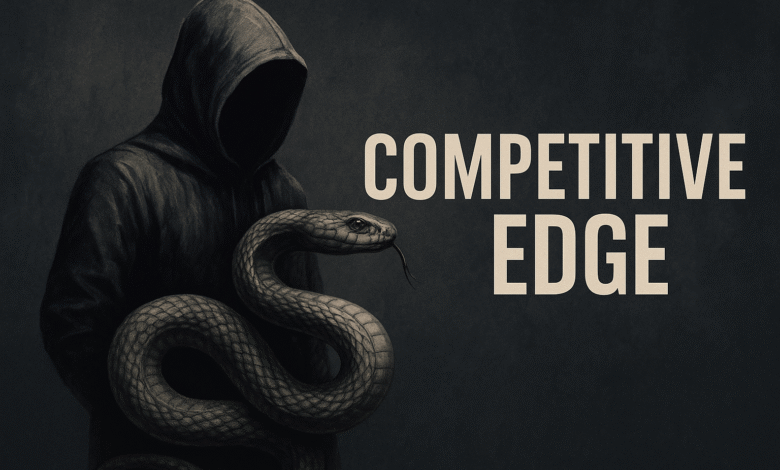Gaining a Competitive Edge The SerpentRogue Way: Strategy Meets Precision

In an ever-changing world, adapting quickly and making accurate decisions are critical for sustained success. One approach gaining attention for its effectiveness is Competitive Edge The SerpentRogue—a framework that emphasizes the power of strategic flexibility combined with sharp decision-making.
This guide explores the principles behind Competitive Edge The SerpentRogue and shows how you can apply them in different areas of life—business, gaming, and personal growth.
Understanding the SerpentRogue Philosophy
The SerpentRogue mindset is about maneuvering with the agility of a serpent and the ingenuity of a rogue. In modern environments where change happens fast, those who remain flexible and deliberate stand a better chance of succeeding. It’s this dual nature—quick to adapt yet precise in action—that makes Competitive Edge The SerpentRogue so impactful.
Defining Competitive Edge The SerpentRogue
At its core, Competitive Edge The SerpentRogue is a model built around three critical capabilities:
-
Precision – Making accurate, strategic decisions
-
Resilience – Recovering effectively from obstacles
-
Adaptability – Adjusting strategies to match new realities
By blending these traits, individuals and organizations position themselves to not only survive but thrive in highly fluid situations.
Historical Influence Behind the Concept
The term “SerpentRogue” evokes two qualities—adaptability and cleverness. Companies like IBM and Netflix illustrate this idea in real terms. IBM pivoted during the tech boom, while Netflix transformed the home entertainment industry by adapting its business model. Both companies illustrate the living embodiment of Competitive Edge The SerpentRogue.
Core Components: Precision, Resilience, Adaptability
Precision: Strategy in Action
Being precise means acting based on insights rather than assumptions.
-
Use Data Wisely: Just like Amazon utilizes data to streamline logistics, you should use tools like analytics software to guide actions.
-
Goal Alignment: Keep your objectives measurable and aligned with long-term vision.
-
Analyze Risks: SWOT (Strengths, Weaknesses, Opportunities, Threats) analysis helps reduce errors in decision-making.
Resilience: Bouncing Back Stronger
No strategy is foolproof. What sets successful people apart is how they handle setbacks.
-
Growth Mindset: Like Edison, see failures as learning steps.
-
Support Network: Lean on mentors, coaches, or peers when times get tough.
-
Wellness Practices: Mental resilience is reinforced by physical and emotional wellness—consider routines that include exercise, meditation, or journaling.
Adaptability: Navigating Change
Being stuck in your ways is no longer an option.
-
Always Be Learning: Keep up with evolving tools and industry trends via platforms like Udemy or LinkedIn Learning.
-
Seek Feedback: Make space for real-time input and suggestions from teammates or stakeholders.
-
Scenario Planning: Learn from disruptions like the pandemic. Plan not just for the best-case scenario, but also for the unexpected.
Real-World Applications
Business: Navigating Market Dynamics
Companies leveraging Competitive Edge The SerpentRogue exhibit nimbleness in strategy.
-
Agile Project Management: Adopt frameworks like Scrum or Kanban to improve productivity.
-
Collaborative Culture: Cross-functional teams offer broader perspectives, improving innovation.
-
Foster Innovation: Encourage experimentation. Google’s 20% time policy birthed projects like Gmail and AdSense.
Gaming: Tactical Thinking and Team Synergy
In gaming, players constantly analyze, adapt, and execute—hallmarks of this strategic model.
-
Match Analysis: Just like chess players review games, gamers should analyze past sessions for improvement.
-
Communication: Multiplayer games require strong teamwork. Adjusting roles based on gameplay is crucial.
-
Fast Learning Loops: The best players adapt between rounds, just as businesses must adapt quarter to quarter.
Self-Development: Mental Strength and Flexibility
You can apply Competitive Edge The SerpentRogue principles to personal development.
-
Clear Goals: Set SMART (Specific, Measurable, Achievable, Relevant, Time-bound) goals.
-
Mindfulness: Practice staying grounded. It helps regulate stress and improve decision-making.
-
Personal Growth: Embrace life changes as chances to grow rather than setbacks.
Step-by-Step Implementation
Step 1: Define Your Goals
Use the SMART model to map out what success looks like in your context.
Step 2: Data-Informed Choices
Use spreadsheets, analytics dashboards, or even surveys to collect meaningful input for your next steps.
Step 3: Embrace Change
Change isn’t a threat—it’s a catalyst. Build flexibility into your workflows and mindset.
Step 4: Strengthen Your Core
Resilience isn’t built overnight. Start with small wins and stay consistent even when outcomes aren’t immediate.
Step 5: Evolve Continuously
Always seek areas for growth. Ask for feedback, self-reflect, and don’t hesitate to pivot when needed.
Conclusion
Success in modern times isn’t about who works hardest—it’s about who adapts best while staying precise and resilient. Competitive Edge The SerpentRogue provides a tested path forward. By mastering the principles of strategic thinking, emotional strength, and agile action, you’re setting yourself up for not just survival, but sustained excellence. Whether you’re a business owner, gamer, or self-improvement enthusiast, this framework can guide your journey forward.
FAQs About Competitive Edge The SerpentRogue
Q1: Which sectors benefit most from Competitive Edge The SerpentRogue?
A: This framework applies broadly—from tech and finance to education, healthcare, and even sports.
Q2: How do I get started with these principles?
A: Start by analyzing your current strengths and weaknesses. Then define clear goals, stay open to learning, and build support networks.
Q3: What are common mistakes to avoid?
A: Sticking rigidly to outdated plans, ignoring feedback, and neglecting personal growth are major obstacles. Stay agile and self-aware.



